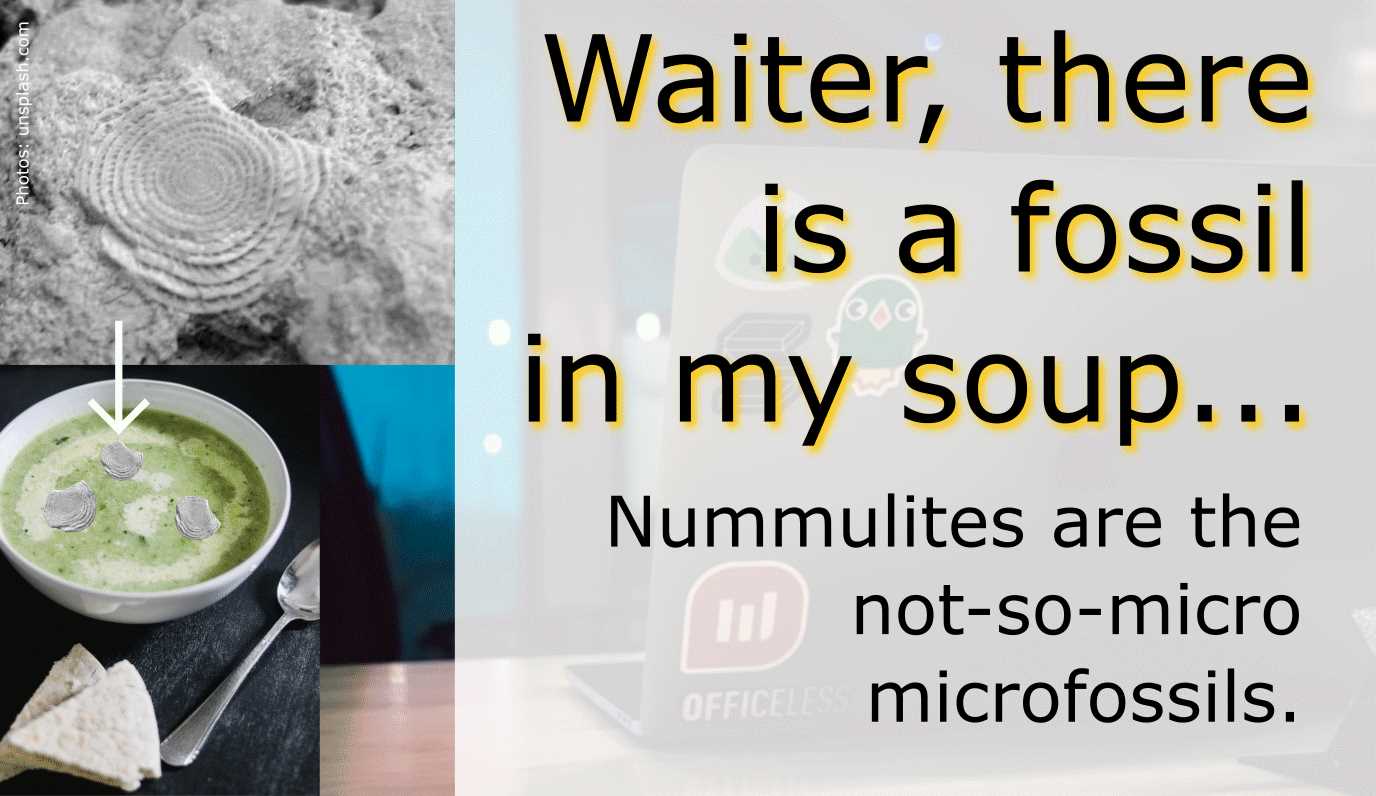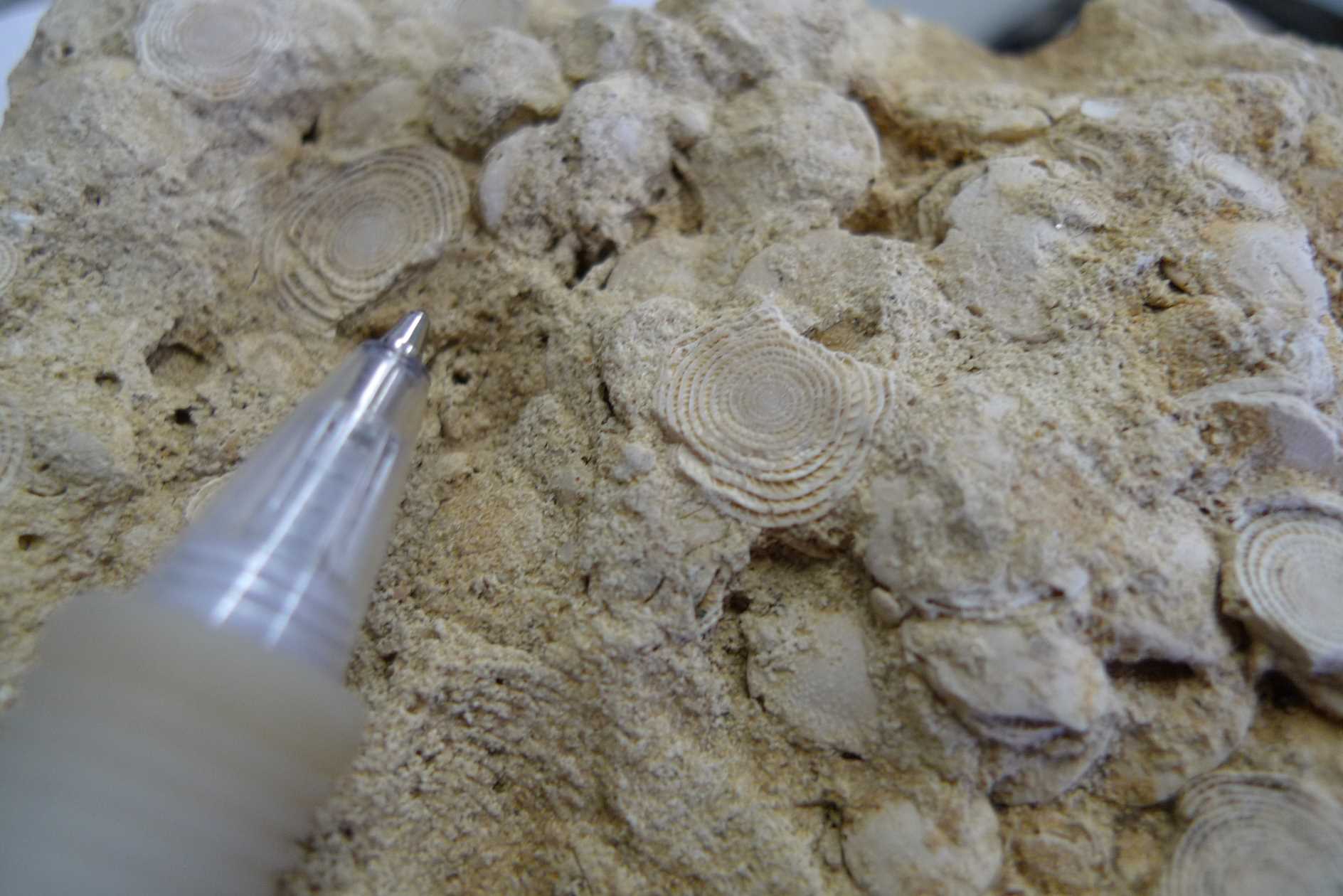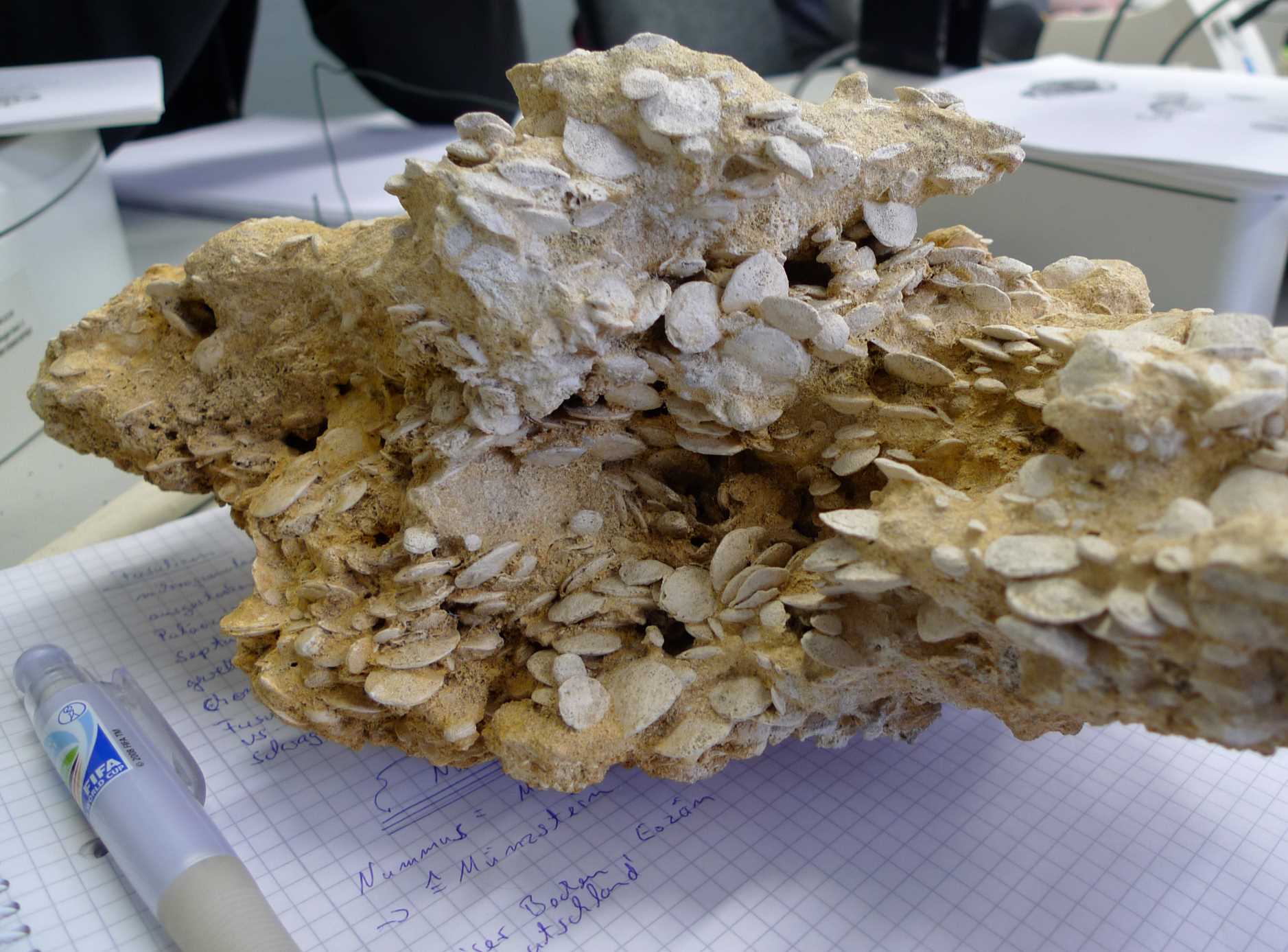Waiter, there is a fossil in my soup...

Nummulites are the not-so-micro microfossils.
Nummulites are a branch of the foraminifera that grow very large. Unlike other genera that can be on the order of 100 μm, these foraminifera grow >1 cm in diameter and are easy to spot with the naked eye.
Nummulite fossils are a common occurence in Paleogene carbonate rocks in the Arabic Peninsula, and Mediterranean (“nummulitic limestone”). Hence, it is no surprise that the ancient Greeks, such as the historian Herododuts (5th century BC), had their ideas but no understanding that they were fossilized single-celled marine organisms.
Since the flat, round shape of the Nummulite test closely resembles coins, it was a short line of thought to make the connection. In fact, the word “Nummulites” is the diminutive form of the Latin nummulus meaning “little coin”.
However, the hand pieces depicted above and below have a different story to tell. The rock is Egyptian limestone that stems from a quarry from where the ancient Egyptian Pharaohs mined rocks for their pyramids.
The same limestone - chock full of nummulites - was also used for the construction of the Great Pyramids. Herodotus visited the Great Pyramids and documented what he saw. His conclusion was that they were petrified lentils dropped by the laborers who built the pyramids.
So if you have a lentil soup in your garden, please clean up after yourself so that the scientists of the future have it easier and can cross out at least one hypothesis.
It is common that nummulite tests will split in half along the long axis so that all the chambers and complex chamberlets become visible (see in figure above).
If you have an intact nummulite test and want to split in half as on the photo above, you can try the following:
- hold the test with some pliers and
- heat it up in the flame of a Bunsen burner.
If you are lucky, there will be some differential expansion and the test will come apart smoothly.

